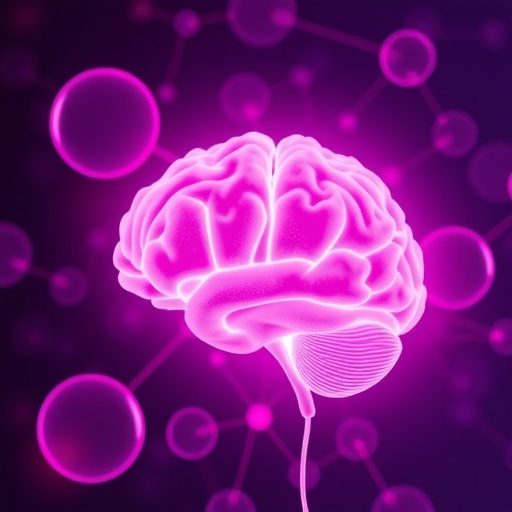A groundbreaking study published in the prestigious journal GigaScience sheds new light on the intricate relationship between a woman’s reproductive lifespan and the rate at which her brain ages. By meticulously analyzing brain imaging data from over 1,000 postmenopausal women, the research uncovers compelling evidence that the duration of reproductive years—defined as the time between menarche (first menstruation) and menopause—may be intricately linked to cognitive longevity. Specifically, women who experienced earlier menarche, later menopause, or enjoy a prolonged reproductive window exhibit signs indicative of slower brain aging compared to their counterparts with shorter reproductive spans.
This discovery captures the attention of neuroscientists and endocrinologists alike, as it highlights estradiol—an ovarian hormone and the predominant form of estrogen throughout female reproductive years—as a potential neuroprotective agent. Estradiol levels, known to surge at puberty and sustain elevated concentrations until the onset of menopause, appear to play a crucial role in sustaining brain health. These hormonal fluctuations are hypothesized to influence a spectrum of neurological processes, ranging from synaptic plasticity and neuroinflammation control to enhancing neuronal communication efficacy.
The implications of these findings extend beyond academic curiosity, potentially informing clinical strategies aimed at mitigating age-related neurodegenerative diseases such as Alzheimer’s. Associate Professor Eileen Lueders from the University of Auckland’s School of Psychology, the lead researcher, emphasizes that this research could pave the way for nuanced hormone-based interventions targeting the peri-menopausal and early postmenopausal phases. Such therapeutic windows might be vital in attenuating the heightened dementia risks observed in some women following menopause-induced estradiol decline.
The research team employed sophisticated neuroimaging techniques coupled with advanced statistical modeling to interrogate brain structure and function in the context of hormonal history. While the study leverages the extensive dataset provided by the UK Biobank, the authors acknowledge limitations inherent in the demographic makeup of the cohort, which skewed towards healthier, predominantly white, socioeconomically advantaged participants. This bias raises questions about generalizability, urging future studies to encompass a broader, more ethnically and socioeconomically diverse population to elucidate hormone-brain interactions more comprehensively.
Estradiol’s neuroprotective effects are biologically plausible and corroborated by a wealth of animal research. In rodent models, estradiol has been demonstrated to promote neurogenesis, enhance synaptic density, and exert anti-inflammatory effects within the central nervous system. These mechanisms collectively support cognitive resilience and adaptive brain remodeling, phenomena critical for maintaining mental acuity during aging. Translating these mechanistic insights into the complexities of human brain aging remains a crucial challenge for translational neuroscience.
Despite the encouraging data, Dr. Lueders and her colleagues caution against overinterpretation. The statistical associations, though significant, are modest in magnitude, and the study design did not include direct measurements of circulating estradiol levels at the time of brain scans. Therefore, while reproductive history serves as a proxy for lifetime estrogen exposure, hormone quantification is essential in future research for refining understanding and discriminating estradiol’s specific contribution from other confounding factors such as genetics, lifestyle choices, and overall health status.
The study’s timing is particularly opportune, given the ongoing debates surrounding hormone replacement therapy (HRT) and its cognitive consequences. For decades, clinicians and patients alike have grappled with inconsistent data regarding HRT’s safety and benefits. Findings like those presented by Lueders et al. enrich this conversation by suggesting that prolonged natural estrogen exposure might have protective cognitive benefits, which could inform personalized medicine approaches. Women contemplating HRT might increasingly weigh these emerging insights alongside established cardiometabolic and oncological considerations.
Co-authors Professor Christian Gaser, Dr. Claudia Bath, and Professor Inger Sundström Poromaa contribute expertise from institutions across Germany, Norway, and Sweden, reinforcing the study’s international collaborative strength. Their multidisciplinary approach integrates neuroimaging, endocrinology, and epidemiology, offering a holistic perspective on aging female brains. The convergence of these disciplines underscores the complexity of hormonal influences on neurobiology and highlights the necessity for integrative methodologies to untangle them.
Looking forward, the research team advocates for longitudinal studies that track hormonal levels, brain changes, and cognitive function over time in diverse populations. Such studies would be instrumental in characterizing the trajectory of brain aging relative to menopausal timing and hormone exposure, ultimately informing evidence-based interventions. Additionally, incorporating biomarkers of inflammation, neurodegeneration, and vascular health may reveal how estradiol interplays with other physiological systems affecting brain health.
The study also resonates with broader societal and medical implications, particularly as global populations age and the prevalence of dementia rises. Understanding sex-specific aspects of brain aging not only addresses a significant knowledge gap but also supports the development of tailored prevention strategies. In an era advocating precision medicine, insights into how endogenous hormones like estradiol shape cognitive trajectories will be invaluable for optimizing healthspan in women.
PhD student Alicja Nowacka of the University of Auckland, though not involved in the study, remarks on its potential to catalyze meaningful conversations about women’s brain health. Her experience supporting women navigating hormone therapy amidst conflicting medical advice exemplifies the need for clear, evidence-based guidance. As research advances, the community hopes for more definitive answers that can empower patients and clinicians alike in making informed choices.
While the scientific community continues to unravel the complexities of estradiol’s role in the brain, this study marks a significant step forward. By illuminating the connection between reproductive history and brain aging, it invites renewed examination of hormonal influences on neurobiology with profound clinical and societal ramifications. The promise of estradiol as a neuroprotective agent offers hope that future interventions may one day preserve cognitive vitality for women worldwide.
Article Title: A Case for estradiol: younger brains in women with earlier menarche and later menopause
News Publication Date: 23-May-2025
Web References: https://academic.oup.com/gigascience/article/doi/10.1093/gigascience/giaf060/8142209
Keywords: Estradiol, brain aging, menopause, menarche, reproductive span, neuroprotection, hormone therapy, neuroplasticity, dementia risk, Alzheimer’s disease




